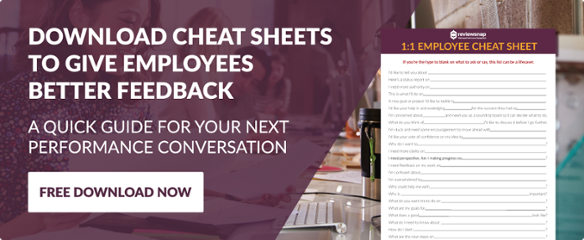The Quiet Ones: How to Create Introvert/Extrovert Harmony

Some workplaces are full of gabby, fun-loving extroverts. Other offices are quiet as a tomb, inviting visitors to wonder if they walked into a workplace or a library. But most departments are a mixture of both; loud sales teams working alongside their quieter service counterparts. Boisterous marketing departments who avoid the glares of the engineering team that’s just trying to concentrate.
The squeaky wheel gets the grease.
It’s an old adage for a reason. As managers, we often give the most attention to those employees who DEMAND it. The quiet ones, who keep their head down and attract neither praise nor criticism can be overlooked during the performance review process. This doesn’t help managers, the team, or those quieter, introverted workers who need just as much attention, correction and feedback as those who beg and plead for it. Here’s how to make sure your employees (all of them) are getting the performance feedback they need.
EXTROVERTS TALK, INTROVERTS LISTEN
So pay attention! Listening is a valuable skill in the workplace so give feedback to employees who are the listeners in your organization. Encourage them to send follow up notes and add their own feedback so their voice isn’t lost in the cacophony. Some introverts may feel more comfortable voicing their opinions via electronic means or in a way that doesn’t interrupt their daily routine, so give them outlets that allow this.
Tweet This: Extroverts talk, introverts listen. Manager tips for giving feedback to both:
For the extrovert: Tell your talkative employees to specifically solicit feedback from their more introverted peers, via discussion, email or the company intranet.
For the manager: Don’t assume because you have a quieter employee, that you also have a disengaged employee. Pay a little more attention to their work product and how it’s impacted by what their colleagues say in meetings.
EXTROVERT NETWORK, INTROVERTS BUILD DEEP CONNECTIONS
Extroverts are a great source of what’s going on in the office. They pay close attention to the daily happenings, but introverts can be a better source of information when a colleague is struggling or working through a longer-term problem. If you’re worried about one of your employees, ask the nearest introvert for their take. You might learn something!
For the extrovert: Extroverts can learn from introverts’ insight but can also teach introverts about how to interact when outside of the office. Have introverts and extroverts ‘buddy up’ when on work trips or at networking events.
For the manager: Use face to face meetings alone to manage performance. Introverts naturally gravitate toward more personal one-on-one performance conversations.
Tweet This: #ManagementTip: Who to go to for office insights:
EXTROVERTS DISCUSS, INTROVERTS PROCESS
Meetings are fantastic for extroverts. They enjoy getting ideas out on the table, brainstorming and tackling issues together. Introverts, on the other hand, may not contribute as much in the meeting session because they need time to process the information. This doesn’t mean they don’t have something to contribute, so give a little time post-discussion before making big project decisions.
For the extrovert: If an extrovert wants to have a meeting, ask them to create an agenda and some background information so everyone can process before the discussion. Not only will this allow introverts to more adequately contribute in the moment, it will force extroverts to process as well!
For the manager: Avoid the management “pop-in”. Let them know you’ll be stopping by, as it’s possible you could interrupt both their work and their focus.
Tweet This: Best practices for managers to prepare introverts and extroverts differently for meetings:
Remember, some people learn, process and engage differently than others. Be sure to include and embrace those intro and extroverts! They are what make up the beautiful fabric of your company.
Ready to link your training and performance together in one cohesive bundle? Download our leadership feedback pack to get tips on making face-to-face performance conversations more effective. In this quick guide, you’ll get easy to follow review checklists for both the manager and the employee with sample questions!
Recent Posts:

